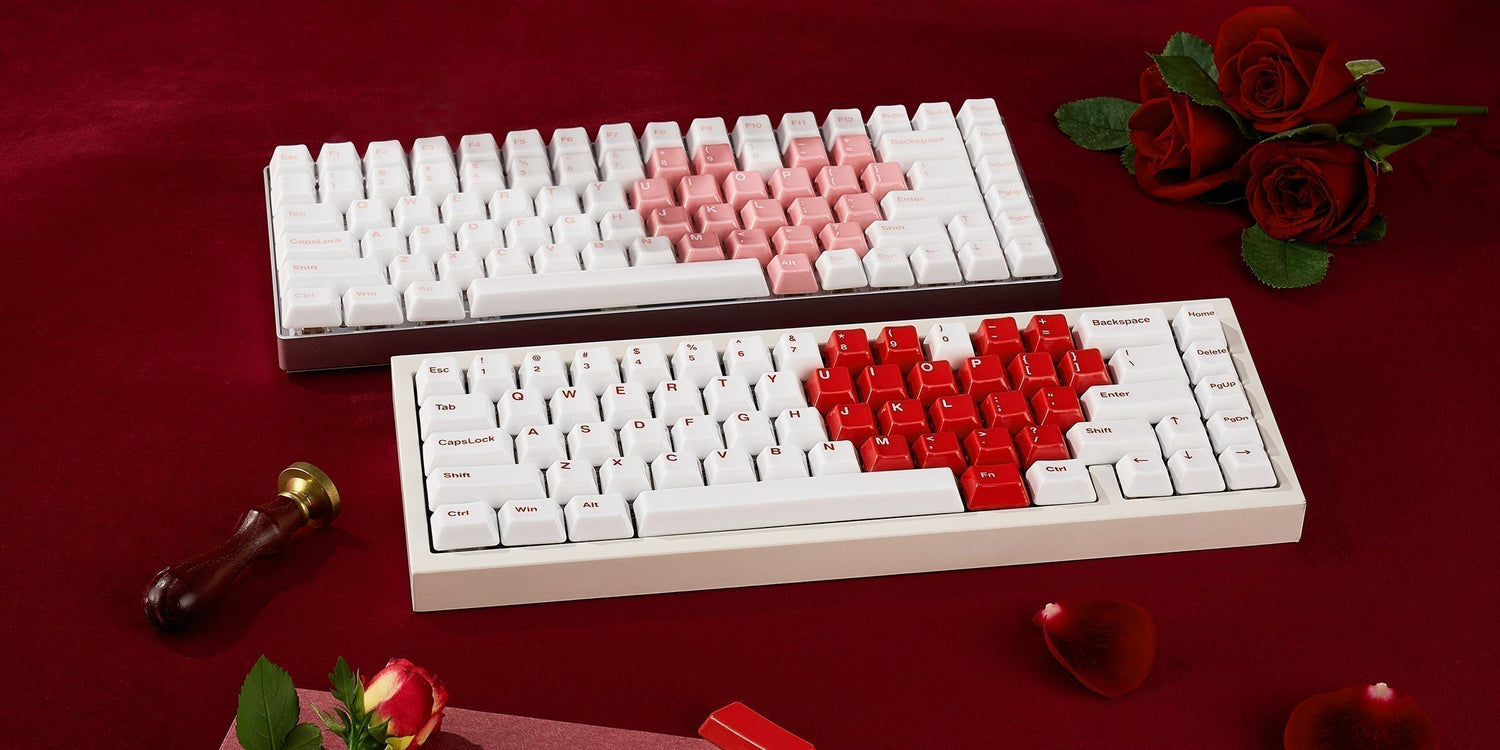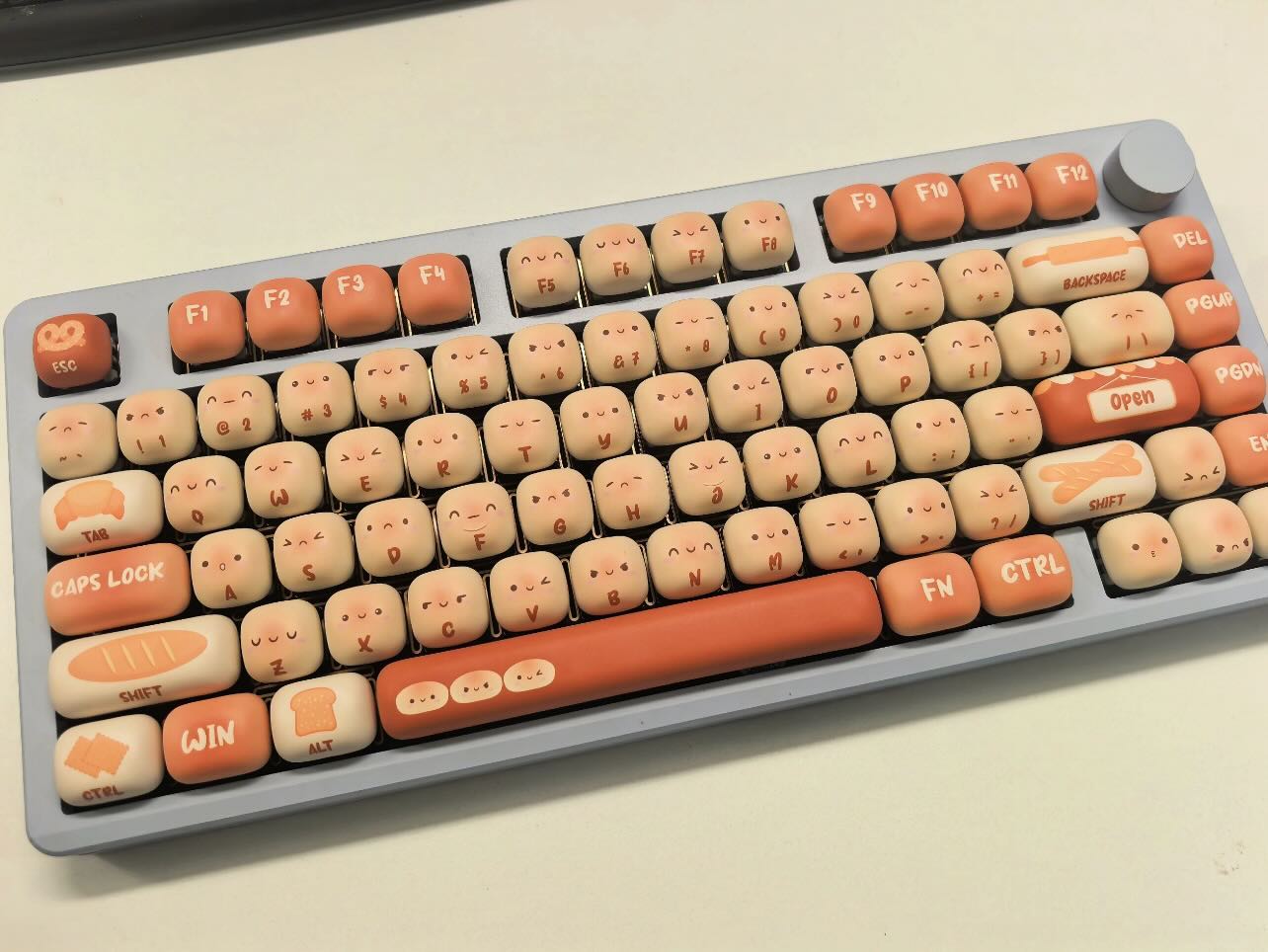When it comes to mechanical keyboards, enthusiasts often focus on the switches, key switch types, and how they feel when typing. But there’s another important piece of the puzzle that can dramatically change your experience — the keycaps! Keycaps not only determine the look of your keyboard but also play a significant role in the sound that accompanies every keystroke.
In this guide, we’re going to break down how different keycaps affect the sound of your mechanical keyboard and give you tips on choosing the right keycaps to match your style. Let’s dive in! 💡
Why Keycaps Matter for Sound 🎶
The sound you hear when you press a key isn’t just about the switches — your keycaps contribute to that unique typing noise. The material, thickness, and shape of the keycaps all play a role in shaping how your keyboard sounds. Here’s how:
-
Material:
Keycaps are usually made from two primary materials: ABS (Acrylonitrile Butadiene Styrene) and PBT (Polybutylene Terephthalate). These materials produce very different sound profiles:- ABS Keycaps: They’re known for a lighter, higher-pitched "clack." They tend to produce a sharp, brighter sound but can wear out over time, leading to a slight change in acoustics.
- PBT Keycaps: These are denser and thicker, leading to a deeper, more "thocky" sound. They’re less prone to wear and typically last longer. For a detailed analysis of keycap materials, check out this guide from HHKB.
-
Ceramic Keycaps: Ceramic keycaps are a more premium material and are increasingly popular among keyboard enthusiasts. These keycaps offer several advantages over ABS and PBT:
- Superior Durability: Ceramic keycaps are incredibly durable and resistant to wear. Unlike ABS, they won't develop a shiny surface with extended use.
- Richer Sound: Ceramic keycaps provide a deeper, more resonant sound compared to ABS and PBT. Their dense structure contributes to a fuller "thock" when typing, which many users find more satisfying.
- Aesthetic Appeal: Ceramic keycaps have a unique, polished look. They often come in a glossy or matte finish that enhances the overall aesthetic of the keyboard.
- Temperature Resistance: Ceramic is heat-resistant and will not warp or degrade over time, unlike some plastics.
-
Thickness:
Thicker keycaps generally produce a richer, deeper sound, while thinner ones are louder and sharper. If you're aiming for a quieter, more muted typing experience, thicker keycaps are the way to go. -
Shape/Profile:
The profile refers to the height and design of the keycaps. Different profiles affect how sound resonates when you press the keys:- Cherry Profile: These keycaps are shorter and more ergonomic, producing a softer, quieter sound.
- SA Profile: Taller and more curved, SA keycaps create a fuller, deeper sound due to their size and shape.
- OEM Profile: These are the most common, and they strike a nice balance between comfort and sound, offering a medium-pitched tone. For a deeper dive into keycap profiles and their effects, check out this guide from Drop.
How to Choose Keycaps Based on the Sound You Want 🔑
Now that you know how keycaps influence sound, let’s figure out how to choose the right ones for your mechanical keyboard!
1. For a "Thocky" Sound 💥
If you’re all about that deep, rich, satisfying "thock" sound — the one that makes every keypress feel solid and premium — go for thicker keycaps, especially those made from PBT plastic. PBT keycaps tend to produce that beloved "thock" because they’re dense and heavy. If you also prefer a taller profile, try SA keycaps — their height will enhance the resonance and give your typing experience even more depth.
Here’s a sound comparison between different materials to help you visualize (and hear) the difference!
2. For a "Clacky" Sound 🔊
If you like the sharp, high-pitched "clack" sound that comes with a more traditional mechanical keyboard, then ABS keycaps are your best bet. These are usually thinner and produce a more distinct, brighter sound. If you like that sound with a bit of height, SA profile keycaps will accentuate the sharpness. Think of it like a crisp, satisfying snap with each keystroke!
To better understand the difference in sound between these materials, check out this detailed comparison video on YouTube. 🎧
3. For a Balanced Sound ⚖️
If you’re after a middle ground — not too deep, not too sharp — then go for PBT keycaps with a more moderate thickness. For profiles, OEM is a great choice as it’s the most common and offers a nice balance between sound and comfort. You’ll get a pleasant, consistent sound that’s not too loud or too soft. Perfect for typing for long hours or gaming without disturbing the house.
Other Considerations 🎨
While the material and profile are the main factors influencing sound, there are a few other things that can affect your keycap experience:
-
Keycap Legends: The way the keycap legends (the letters or symbols) are printed can affect sound. Double-shot keycaps — where the legend is made from a second piece of plastic — tend to offer a clearer, more uniform sound. Pad-printed keycaps may sound a little different, and over time, the print may wear off. You can read more about keycap legends here.
-
Keycap Finish: Some keycaps have a matte or glossy finish, and this can affect the feel of your typing, though it doesn't have a huge impact on sound. Matte finishes typically feel smoother, while glossy keycaps might add a slight texture.
Conclusion: Find Your Perfect Sound 🎧
At the end of the day, choosing the right keycaps for your mechanical keyboard comes down to personal preference. Whether you’re looking for a satisfying "thock," a sharp "clack," or something in between, keycaps offer a great way to customize your typing experience. The right material, thickness, and profile can transform your keyboard into a tool that matches your unique sound and feel preferences.
Ready to experiment with your keyboard’s sound? Check out these highly-rated keycap sets from Signature Plastics.
Experiment with different keycaps, play around with materials and profiles, and find the combo that makes your typing (and gaming) experience truly yours. Happy typing! ✨




Laisser un commentaire
Ce site est protégé par hCaptcha, et la Politique de confidentialité et les Conditions de service de hCaptcha s’appliquent.